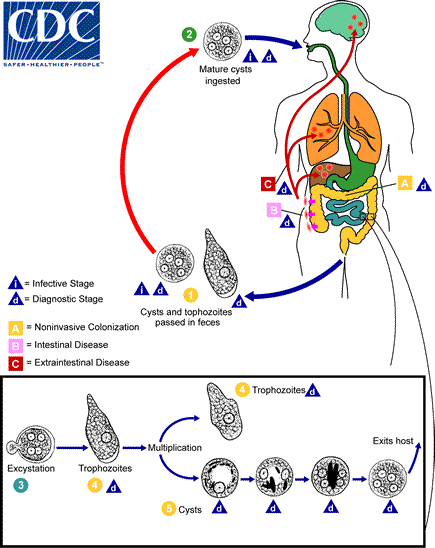Ficheiro:Amebiasis LifeCycle.gif
Amebiasis_LifeCycle.gif (435 × 548 píxeis, tamanho: 27 kB, tipo MIME: image/gif)
Histórico do ficheiro
Clique uma data e hora para ver o ficheiro tal como ele se encontrava nessa altura.
| Data e hora | Miniatura | Dimensões | Utilizador | Comentário | |
|---|---|---|---|---|---|
| atual | 21h26min de 21 de julho de 2015 |  | 435 × 548 (27 kB) | CFCF | User created page with UploadWizard |
Utilização local do ficheiro
A seguinte página usa este ficheiro:
Utilização global do ficheiro
As seguintes wikis usam este ficheiro:
- en.wiki.x.io
- fa.wiki.x.io
- ga.wiki.x.io
- ja.wiki.x.io
- ko.wiki.x.io
- or.wiki.x.io
- ro.wiki.x.io
- simple.wiki.x.io
- sr.wiki.x.io
- ta.wiki.x.io
- vi.wiki.x.io
- zh.wiki.x.io



